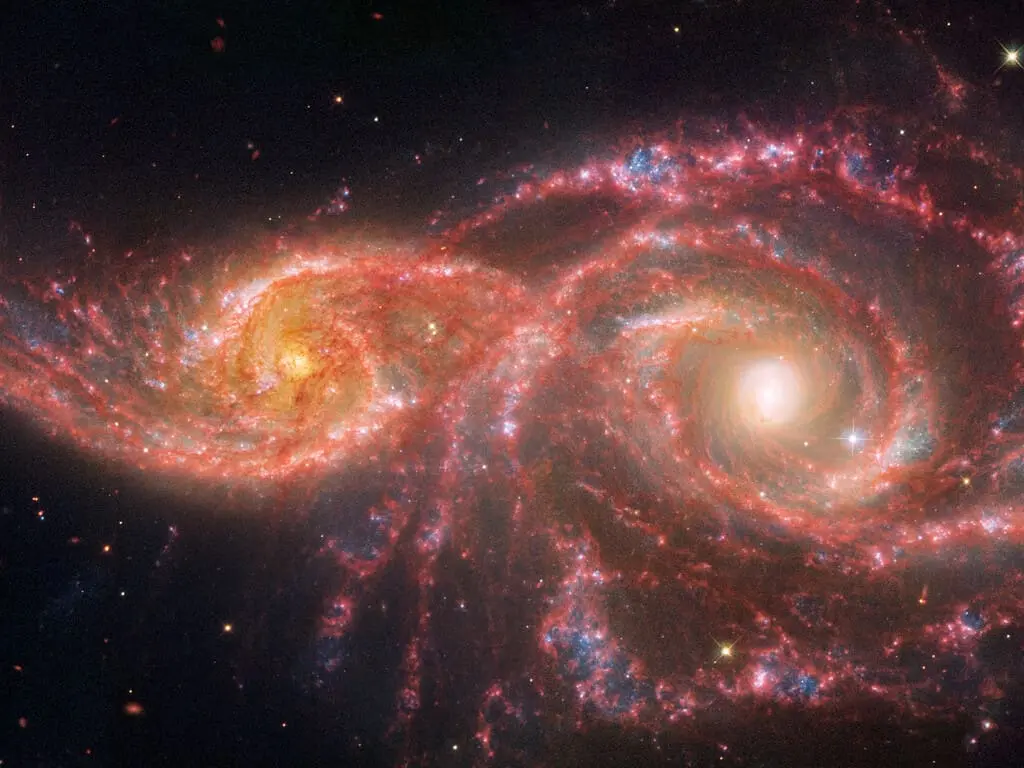| Summary |
|
The European Space Agency (ESA) released new images of the merging galaxy pair IC 2163 and NGC 2207 on October 31, 2024. Captured by both the James Webb Space Telescope and the Hubble Space Telescope, the images show the smaller galaxy IC 2163 interacting with the larger NGC 2207. The collaboration between the two telescopes provides a more complete view, combining infrared and visible light data.
IC 2163 and NGC 2207 are in the early stages of a galactic merger, with IC 2163 currently shifting behind the larger galaxy. Such interactions, known as galactic cannibalism, are common across the universe. According to the Harvard Center for Astrophysics, roughly 25 percent of galaxies experience mergers at some point in their history.
The James Webb Space Telescope (JWST) captures infrared light, revealing details invisible to the human eye, while Hubble records visible light. This combination allows scientists to study the structure, star formation, and dust content of merging galaxies in greater detail than ever before.
Previously, James Webb captured images of another pair of merging galaxies, ARP 142, demonstrating its ability to track dynamic interactions over time. Observing galaxy mergers helps researchers understand how galaxies evolve and grow.
The IC 2163 and NGC 2207 images highlight both the scale and complexity of galactic interactions. Scientists will continue to monitor these galaxies to learn more about their movement, collision effects, and the broader role of mergers in shaping the universe.

